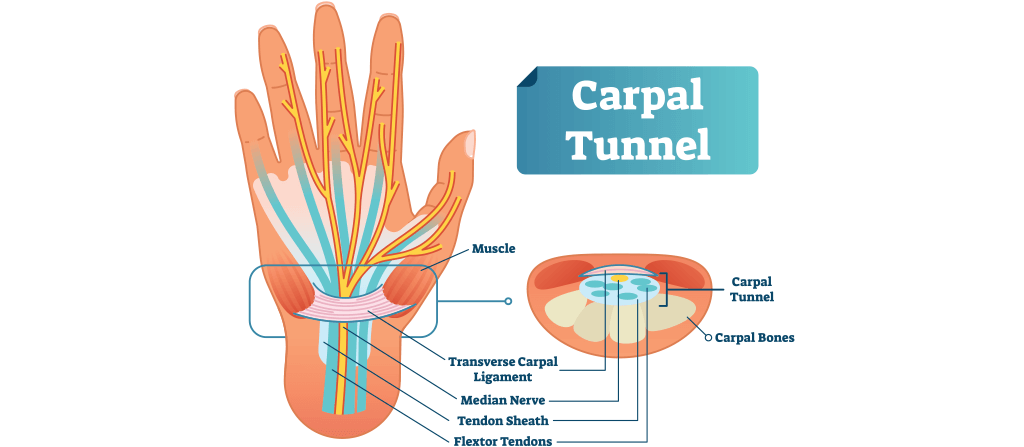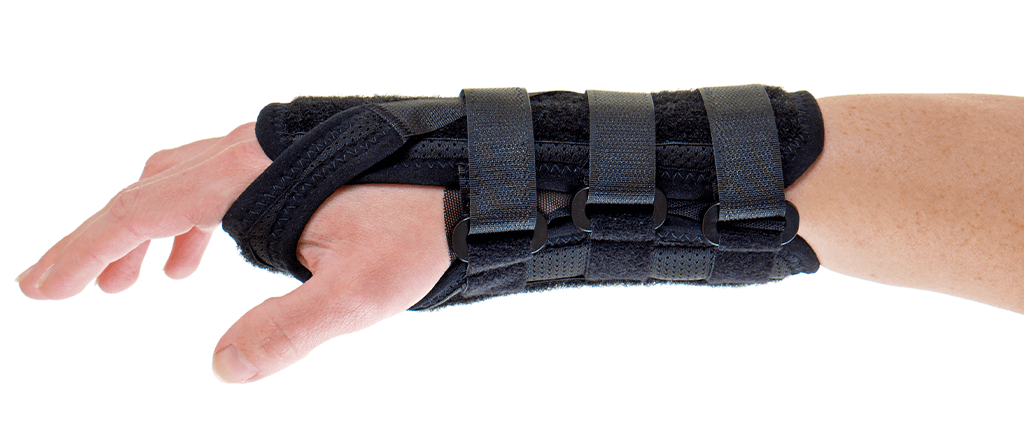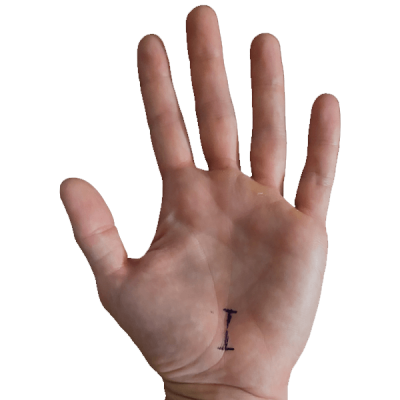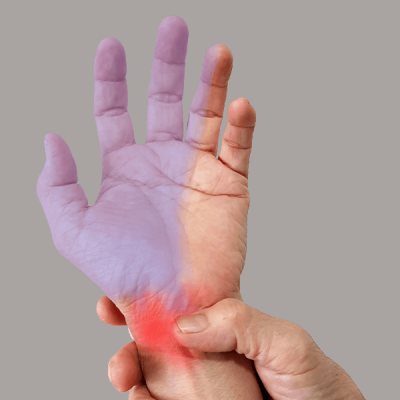What is Carpal Tunnel Syndrome (CTS)?
Carpal tunnel syndrome (CTS) is a common condition that usually causes numbness and tingling in the fingers. Most commonly, the thumb, index, middle, and ring fingers are affected, but it can cause symptoms in the entire hand. In addition to numbness, CTS can cause aches, pain, and loss of grip-strength. Symptoms often get worse while driving, holding an object, doing your hair, typing, or performing any repetitive motions. It is also common for symptoms to worsen at night: many wake up to shake out their hands or dangle their arms to improve their discomfort.
What is the Cause?
CTS is caused by the compression of the median nerve at the wrist by the transverse carpal ligament. When the nerve is compressed, it loses blood flow which causes symptoms to occur. In the early stages of the disease, symptoms come and go. Symptoms improve when the pressure in the carpal tunnel goes down enough to allow the nerve to get enough blood flow to recover and heal. In some cases, the nerve gets compressed consistently so that the nerve never gets the chance to heal. This can result in permanent nerve damage that may not be treatable. Once symptoms become constant, I recommend prompt surgery to prevent or minimize the amount of permanent nerve damage.

Non-surgical Treatment Options
CTS can often be managed without surgery. I recommend a trail of conservative treatments when there are no constant symptoms. A nerve is somewhat like an electric wire or hose. The nerve can become kinked as the pressure inside the carpal tunnel goes up with wrist flexion. The nerve gets the best blood flow when the wrist is straight. Nighttime brace use can allow the nerve to rest and heal with optimal blood flow, which can often improve symptoms during the day. The brace needs to have a rigid support to be effective. Another method of conservative treatment is steroid injection into the carpal tunnel. This can be an effective short-term solution for symptom relief, lasting approximately three months. However, it is unlikely to result in a permanent symptom solution.

When is Surgery Appropriate?
If patients experience constant symptoms or if symptoms have not improved with bracing, surgery is a highly-effective treatment option. Surgery has a 98-99% success-rate. Waking up at night due to any discomfort typically resolves within a few days of the procedure. For patients that did not experience constant numbness, all symptoms typically resolve. The longer symptoms have been present, the longer it takes for the nerve to heal and for the symptoms to subside. Patients experiencing constant symptoms often still see some improvement and many completely recover. However, some patients with constant symptoms will continue to have numbness. In these patients, surgery can still be helpful to prevent further worsening of permanent nerve damage.
Carpal tunnel release surgery is an outpatient procedure. This means that patients can go home the same day as their surgical procedure. The surgery can be done under light sedation and typically takes about 10 minutes. With sedation, patients will not remember the surgery, but they do need a driver and cannot eat for 12 hours prior to surgery.
Alternatively, the surgery can be done with a local anesthetic. Patients getting surgery under local anesthetic will be awake during the procedure and will feel the local anesthetic injection, but they will not feel the surgical procedure. The local anesthetic used is lidocaine, which is commonly use in dental procedures. With a local anesthetic procedure, patients can drive themselves home and do not need to restrict their food intake before surgery.

What to Expect After Surgery
Patients are placed into a soft dressing after surgery (no splint or cast is needed). On the day of the surgery patients can lift up to five pounds and they are encouraged to move their wrist and fingers immediately after surgery. The dressing is kept on for five days. When the dressing is removed, patients can shower or wash their hands and then pat the incision dry. The incision can then be left open to the air, but some patients find the use of a Band-Aid helpful in preventing the sutures from being caught on clothes or pockets. Typically, patients are prescribed a 12-count of hydrocodone (Vicodin) for pain management after surgery. Most only need to take pain medication for 1-2 days and many can recover without needing narcotic pain medications at all.
The amount of time that patients need to take off work after surgery varies and is dependent on the individual worker’s situation. Typically, office workers are given a note for up to four weeks off. However, most can return to work within 1-2 days if they wish. Patients that would typically be cleared to use something as strenuous as a jackhammer can return to work 4-6 weeks after surgery. Those same laborers can even return to work after 1-2 days with appropriate padding of the incision site.
What are the Potential Risks?
The vast majority of the time (99-98%), no complications occur with carpal tunnel release surgery. However, every surgery has risks including pain, bleeding, and infection. Specific risks for this surgery can include damage to the nerve and its branches and incomplete release of the transverse carpal ligament. The “mini open” technique, which I prefer, has a lower rate of incomplete release of the ligament and a lower rate of nerve injury compared to endoscopic carpal tunnel release. Additionally, the transverse carpal ligament can heal and carpal tunnel syndrome can reoccur. We see this in approximately 10% of patients and it typically takes about 20 years to reoccur. Finally, the most common complication patients experience is difficulty with their wound healing properly. The palm tends to heal with a callus and can take more time to heal than cuts in other locations. Massaging and padding the scar can help improve scar sensitivity.
FAQ
- Carpal tunnel can be caused by or exacerbated by repetitive motions and or heavy lifting.
- In Washington, it can be covered under workers’ compensation.
- If you have constant numbness, tingling, or weakness of the muscles in the hand.
- If you have tried braces at night but they didn’t give you adequate relief.
- Carpal tunnel syndrome can often be diagnosed without EMG.
- EMG may be needed if the presentation is atypical or required by insurance.
- Most often EMG is not needed.
- I recommend against bilateral release at the same time.
- You need a lot of support for daily hygiene activities and you must keep both hands clean for five days.
- You cannot compensate for your temporarily weaker hand.
- Bilateral surgery is possible if patients understand the risks and have adequate support.
- Most patients are able to recover motion, strength, and function on their own in 2-4 weeks without therapy.
- In rare cases, if patients are slow to recover, I will prescribe occupational therapy.
- Cost depends on a number of factors such as your insurance provider and copay.
- Having your procedure at an ambulatory surgery center verses a hospital reduces the cost of the procedure. This often means a lower out-of-pocket expense for you!







